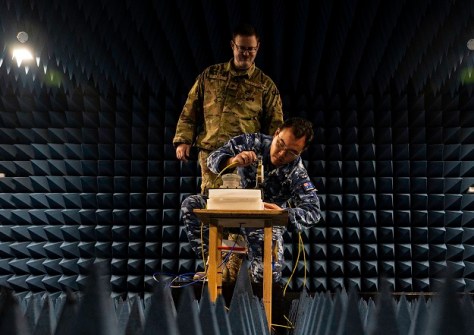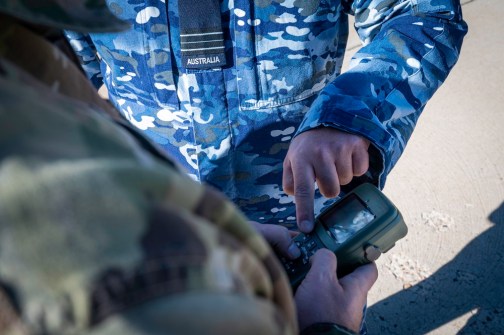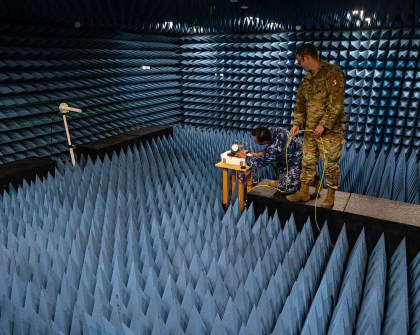
Personnel from the Australian Defence Force’s (ADF) Joint Positioning, Navigation, and Timing Directorate recently collaborated with counterparts in the US military’s Joint Navigation Warfare Center to put a commonly used military GPS device to the test.
The aim of the effort was to assess the Defense Advanced GPS Receiver’s (DAGR) performance under simulated jamming conditions in order enhance resilience in contested environments.
The DAGR is widely used by the US, Australian and other allied militaries for land, sea and air navigation.

Potential adversary nations are actively developing evolved methods of jamming GPS, making these kinds of research collaborations between Australia the US even more important.
The Joint Navigation Warfare Center’s (JNWC) mission is to facilitate positioning, navigation and timing (PNT) superiority for the US Department of Defense, other agencies and coalition partners. Its anechoic chamber was the perfect facility to evaluate the DAGR’s performance.
The evaluation team explored potential jamming solutions, such as antennae that enhance jamming resilience. The findings will be shared with coalition partners.

PNT resilience for both the civilian and military domains is an issue of growing concern around the world. Here in Australia, FrontierSI has just announced the commencement of a new study that will:
- Help identify gaps in Australia’s PNT policy;
- Gain insights from the policies and approaches of allied nations; and
- Assess the critical capabilities and technological needs essential for ensuring the ADF’s resilience.
Meanwhile, Australian company QuantX Labs obtained $750,000 in funding from the Department of Defence late last year for a research project aimed at developing a secured PNT capability for defence applications.
In the US, CACI International was recently awarded a 10-year ‘expertise contract’ valued at up to US$450 million to support the JNWC.
“Adversary PNT capabilities rapidly evolve, putting our warfighters and national security operations at risk around the world,” said John Mengucci, CACI President and CEO.







